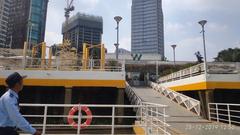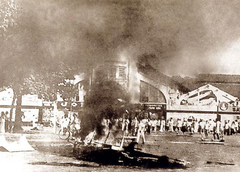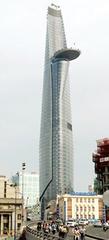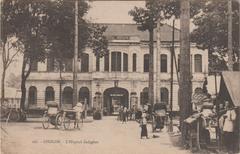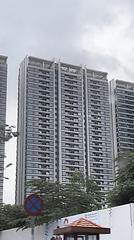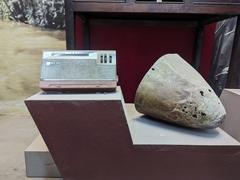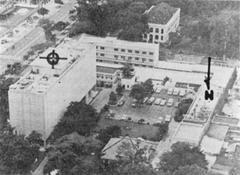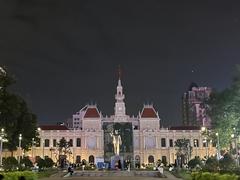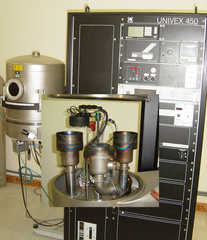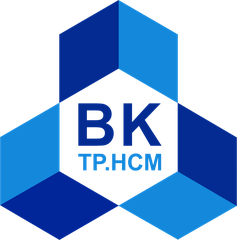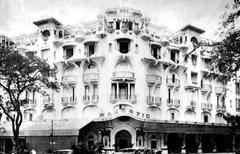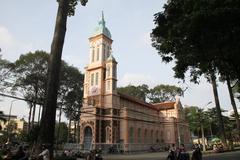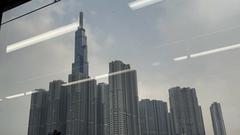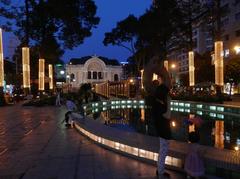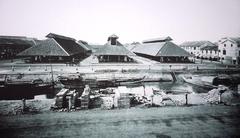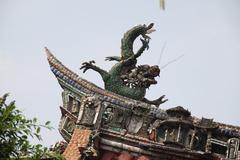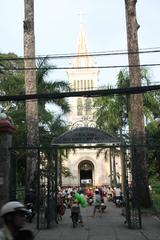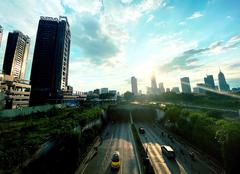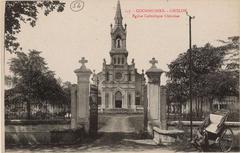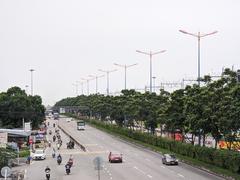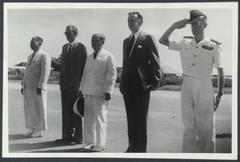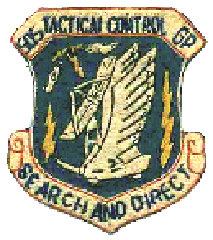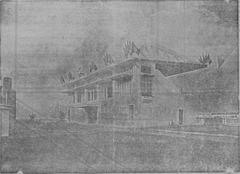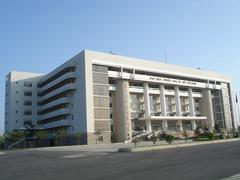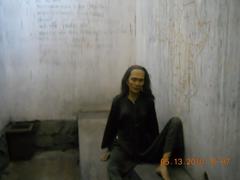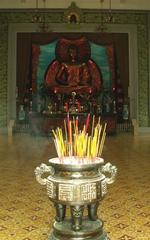Ho Chi Minh City Open University Visiting Guide: Tickets, Hours, and Attractions
Date: 04/07/2025
Introduction
Ho Chi Minh City Open University (HCMCOU) is a cornerstone of Vietnam’s educational system, particularly for southern Vietnam. Established in 1990 as a center for distance education and elevated to university status in 1993, HCMCOU has played a leading role in democratizing higher education across the country. It is recognized for its commitment to accessible, flexible learning and for serving a diverse student population—including working adults, rural learners, and those seeking part-time or distance education. Over the years, HCMCOU has expanded its academic offerings to include a wide range of disciplines, reflecting the evolving needs of Vietnamese society.
Situated in the lively District 3 of Ho Chi Minh City, HCMCOU is not a conventional tourist attraction. However, it offers visitors unique insights into Vietnam’s educational progress and modernization. Those with interests in academic innovation, university architecture, or inclusive education will find a visit to this institution both informative and inspiring. The campus is easily accessible by public transportation, and while it is open to visitors on weekdays, arranging tours in advance is recommended.
Additionally, the university’s central location places it near several cultural and historical sites, such as the War Remnants Museum, Jade Emperor Pagoda, and Le Van Tam Park. For comprehensive information on academic programs and campus life, the official HCMCOU website is an invaluable resource. This guide provides essential details for prospective visitors and learners looking to explore HCMCOU and its vibrant surroundings.
Contents Overview
- Introduction
- Historical Overview
- Founding and Early Development
- Growth and Expansion
- Modernization and Internationalization
- Academic Profile
- Faculties and Programs
- Enrollment and Student Demographics
- Research and Academic Output
- Accreditation and Quality Assurance
- Community Engagement and Lifelong Learning
- Visiting Information
- Nearby Attractions
- Additional Resources
- FAQ
- Conclusion
Historical Overview
Founding and Early Development
HCMCOU originated in 1990 as the Center for Distance Education, under the Ministry of Education and Training, with the primary goal of delivering flexible study opportunities for those unable to attend traditional universities. By 1993, it became one of Vietnam’s pioneering open universities, providing both distance and on-campus education options. HCMCOU’s foundational mission has been to make higher education accessible to a broad segment of the population, including those in remote and rural areas.
Growth and Expansion
During the 1990s and 2000s, the university experienced rapid growth, establishing multiple campuses throughout Ho Chi Minh City and nearby provinces. It expanded its faculties to include Economics, Business Administration, Law, Foreign Languages, and Information Technology, aligning with the nation’s economic development.
Modernization and Internationalization
In recent years, HCMCOU has adopted modern educational technologies, such as e-learning platforms and blended learning models. The university has also built partnerships with international institutions in Australia, the United States, Japan, and South Korea, supporting academic exchanges and collaborative research.
Academic Profile
Faculties and Programs
As of 2025, HCMCOU offers more than 10 faculties, covering fields such as Economics and Management, Biotechnology, Social Work, Construction Engineering, Environmental Science, and more. Both full-time and part-time study options are available, along with distance learning programs to accommodate different student needs.
Enrollment and Student Demographics
HCMCOU serves over 30,000 students from diverse backgrounds, including working professionals and those from rural regions. Its outreach initiatives and scholarship programs are designed to support disadvantaged students and promote educational equity.
Research and Academic Output
The university is noted for its applied research, particularly in sustainable development and educational technology. HCMCOU ranks among the top universities in Ho Chi Minh City for both research output and alumni impact.
Accreditation and Quality Assurance
All academic programs at HCMCOU are accredited by Vietnam’s Ministry of Education and Training, with additional recognition from international bodies such as AUN-QA. The university maintains a strong focus on continuous quality improvement and faculty development.
Community Engagement and Lifelong Learning
Upholding its open university ethos, HCMCOU offers a range of continuing education and professional development courses. The university actively partners with local communities to address social and economic challenges through education.
Visiting Information
Although primarily an academic institution, HCMCOU welcomes visitors interested in Vietnam’s higher education landscape or university architecture.
- Address: 97 Vo Van Tan, District 3, Ho Chi Minh City
- Visiting Hours: Monday to Friday, 8:00 AM – 5:00 PM
- Access: Conveniently reachable via public transit and taxi.
- Visitor Tips: Contact the university administration in advance to arrange guided tours or meetings.
Nearby Attractions
When visiting HCMCOU, consider exploring these nearby sites in District 3 and central Ho Chi Minh City:
- War Remnants Museum
- Jade Emperor Pagoda
- Le Van Tam Park
Additional Resources
For further details on academic offerings, campus life, and visitor information, consult the official HCMCOU website.
FAQ
Q: Is Ho Chi Minh City Open University open for public tours?
A: While HCMCOU is mainly an educational facility, visitors interested in tours should contact the university administration in advance.
Q: Are there any special events open to the public?
A: Occasionally, the university hosts public lectures and cultural events. Check the official website for updates.
Q: How can I apply to study at HCMCOU?
A: Application details are available on the official university website.
Conclusion
Ho Chi Minh City Open University plays a significant role in Vietnam’s educational landscape, exemplifying the nation’s commitment to accessible and modern higher education. While not a typical tourist attraction, a visit to HCMCOU offers valuable perspectives on academic innovation and the country’s modernization. Visitors interested in educational institutions or Vietnam’s social progress will find the experience insightful.
Make the most of your visit by exploring the university alongside nearby historical and cultural sites, deepening your understanding of Ho Chi Minh City’s dynamic character.
War Remnants Museum: Visitor Guide
Introduction
The Ho Chi Minh City War Remnants Museum stands as one of Vietnam’s most important historical sites. Located in District 3, it provides a sobering and comprehensive account of the Vietnam War and its aftermath, attracting tourists, history enthusiasts, and scholars alike.
History and Significance
Founded in 1975, shortly after the end of the Vietnam War, the museum preserves a vast collection of artifacts, photographs, and military equipment. It serves as a poignant reminder of the war’s human cost and advocates for peace and reconciliation.
Visiting Hours and Ticket Information
- Opening Hours: Daily, 7:30 AM to 6:00 PM (last admission at 5:30 PM)
- Ticket Prices:
- Adults: 40,000 VND (~$1.70 USD)
- Students and Children: 20,000 VND (~$0.85 USD)
- Children under 6: Free
- Guided Tours: Available upon request; audio guides in multiple languages enhance the experience.
Exhibits and Highlights
- War Crimes Exhibition: Documents the effects of chemical warfare, such as Agent Orange.
- Military Equipment Display: Features tanks, helicopters, and weaponry from the war era.
- Photography Galleries: Showcases powerful images depicting the war’s human impact.
- Prisoner and Reeducation Exhibits: Illustrates the conditions experienced by prisoners of war.
Travel Tips and Accessibility
- Location: 28 Vo Van Tan Street, District 3, Ho Chi Minh City
- Best Time to Visit: Early mornings, especially during the dry season (December–April), to avoid crowds and heat.
- Accessibility: Fully wheelchair accessible with ramps and elevators.
- Photography: Permitted in most areas; avoid using flash.
Nearby Attractions
- Independence Palace
- Notre-Dame Cathedral Basilica of Saigon
- Ben Thanh Market
FAQs
Q: Are there special events or exhibitions?
A: The museum hosts temporary exhibits and commemorative events, especially on national holidays.
Q: Is the museum child-friendly?
A: While educational, some exhibits are intense for young children. Parental discretion is advised.
Q: Can I buy tickets online?
A: Tickets are currently purchased on-site. Arrive early during peak seasons for the best experience.
Conclusion
A visit to the War Remnants Museum offers powerful insights into Vietnam’s history and resilience. Whether you’re a history buff or a curious traveler, the museum provides a meaningful perspective on the Vietnamese people’s spirit.
For more information, visit the official Ho Chi Minh City Tourism website.
Independence Palace (Reunification Palace) Visitor Guide
Introduction
The Independence Palace, also known as the Reunification Palace, is a symbol of Vietnam’s modern history and a must-visit landmark in Ho Chi Minh City. It played a pivotal role during the Vietnam War and remains a site of great historical significance.
History and Cultural Significance
Completed in 1966, the palace was the presidential residence of South Vietnam until the end of the Vietnam War in 1975, when a North Vietnamese tank famously breached its gates. The building showcases well-preserved war rooms, period furnishings, and vintage vehicles that transport visitors back to this critical era.
Visiting Hours and Ticket Information
- Opening Hours: Daily, 7:30 AM–11:00 AM and 1:00 PM–4:00 PM
- Ticket Prices: Approximately 40,000 VND for adults; discounts for students and seniors; children under six enter free
- Guided Tours: Offered in English and Vietnamese for an additional fee
Getting There
Located at 135 Nam Kỳ Khởi Nghĩa Street, District 1, the palace is easily reached by taxi, Grab, or public bus. Many visitors combine a trip here with other central attractions.
Accessibility and Facilities
The palace is wheelchair accessible, with ramps and elevators. Facilities include restrooms, a souvenir shop, and a café. Photography is generally permitted without flash or tripods.
Special Events and Exhibitions
The palace hosts exhibitions and cultural events throughout the year. Check the official website or local tourism sites for schedules.
Visitor Tips
- Arrive early to avoid crowds.
- Wear comfortable shoes and bring water, especially during hot months.
- Review the palace’s event calendar before visiting.
Visuals
Related Attractions
For further exploration, see the War Remnants Museum and Notre-Dame Cathedral Basilica of Saigon.
Frequently Asked Questions (FAQ)
Q: What are the palace’s visiting hours?
A: 7:30 AM–11:00 AM and 1:00 PM–4:00 PM daily.
Q: How much are tickets?
A: 40,000 VND for adults, with discounts for students and seniors; free for children under six.
Q: Is it wheelchair accessible?
A: Yes, with ramps and elevators.
Q: Are guided tours available?
A: Yes, for an additional fee.
Q: Can I take photos?
A: Yes, except with flash or tripods.
Call to Action
Enhance your visit with the Audiala app for guided tours and audio commentary. Follow us on social media for more travel tips and inspiration!
Ho Chi Minh City Museum of History: Comprehensive Visitor Guide
History and Cultural Significance
The Ho Chi Minh City Museum of History, established in 1929, is located in a beautiful French colonial building in District 1. The museum offers an in-depth look at Vietnam’s heritage from ancient times to the modern era, featuring artifacts such as Cham sculptures, historical costumes, ceramics, and relics from various dynasties.
Visiting Hours
- Open: Tuesday to Sunday, 8:00 AM–5:00 PM
- Closed: Mondays and public holidays
Ticket Information
- Adults: 40,000 VND (~$1.70 USD)
- Students/Seniors: 20,000 VND (~$0.85 USD)
- Children under 6: Free
- Group Discounts: Available for groups of 10+ with advance booking
- Combo Tickets: Sometimes available with the Fine Arts Museum
Tours and Audio Guides
Guided tours (English and Vietnamese) and audio guides are available on-site or through the museum’s website.
Key Exhibits
- Ancient Vietnamese Artifacts: Dong Son drums, Cham sculptures
- Colonial History: French colonial era exhibits
- Ethnographic Collections: Displays on Vietnam’s ethnic groups
Nearby Attractions
- Reunification Palace
- Notre-Dame Cathedral Basilica of Saigon
- Ben Thanh Market
Accessibility and Transportation
The museum is centrally located and accessible by bus, taxi, or ride-hailing services. Facilities accommodate visitors with disabilities.
Visitor Tips
- Visit on weekday mornings for fewer crowds.
- Photography permitted without flash.
- English signage is available; audio guides recommended for deeper understanding.
Frequently Asked Questions (FAQ)
Q: Is there parking?
A: Limited parking is available, but public transport is recommended.
Q: Are there special exhibitions?
A: The museum holds temporary exhibits and events—check the official website for updates.
Q: Can I buy tickets online?
A: Yes, advance purchase is possible via the museum’s website.
Q: Is the museum suitable for children?
A: Yes, with interactive and educational exhibits for younger visitors.
Summary and Final Tips for Visiting Ho Chi Minh City Open University
Ho Chi Minh City Open University embodies Vietnam’s commitment to expanding access to higher education and fostering academic innovation. Its flexible learning models and international collaborations make it a prominent example of modern educational values in Vietnam. For visitors interested in the country’s social progress and educational institutions, exploring HCMCOU’s campus offers valuable perspective.
The university’s location in District 3 also provides convenient access to key historical and cultural landmarks such as the War Remnants Museum and Independence Palace, allowing for a richer, more contextual experience of Ho Chi Minh City’s heritage. For the latest information on campus visits, events, and academic programs, consult the official HCMCOU website.
Sources and Official Links
- Ho Chi Minh City Open University: A Historical and Academic Overview, 2025, Ho Chi Minh City Open University (https://www.ou.edu.vn/)
- Visiting the Ho Chi Minh City War Remnants Museum: Hours, Tickets, and Travel Tips, 2025, Ho Chi Minh City Tourism (https://www.visithochiminhcity.vn)
- Visiting Ho Chi Minh City’s Independence Palace: Hours, Tickets, and Travel Tips, 2025, Ho Chi Minh City Tourism
- Visiting the Ho Chi Minh City Museum of History: Hours, Tickets, and Visitor Guide, 2025, Ho Chi Minh City Museum of History (https://www.baotanglichsu.vn/en)
